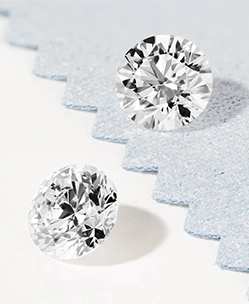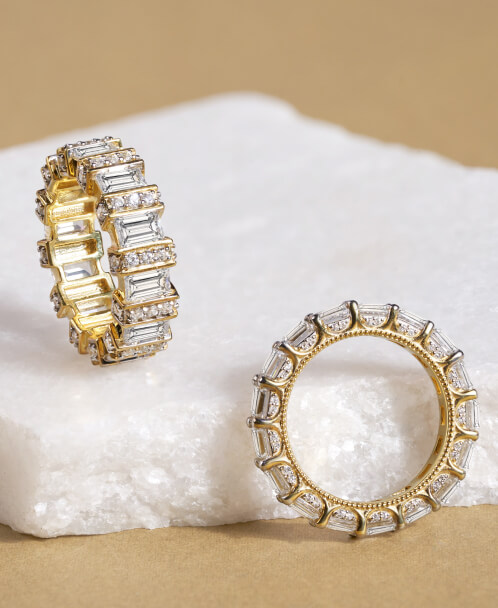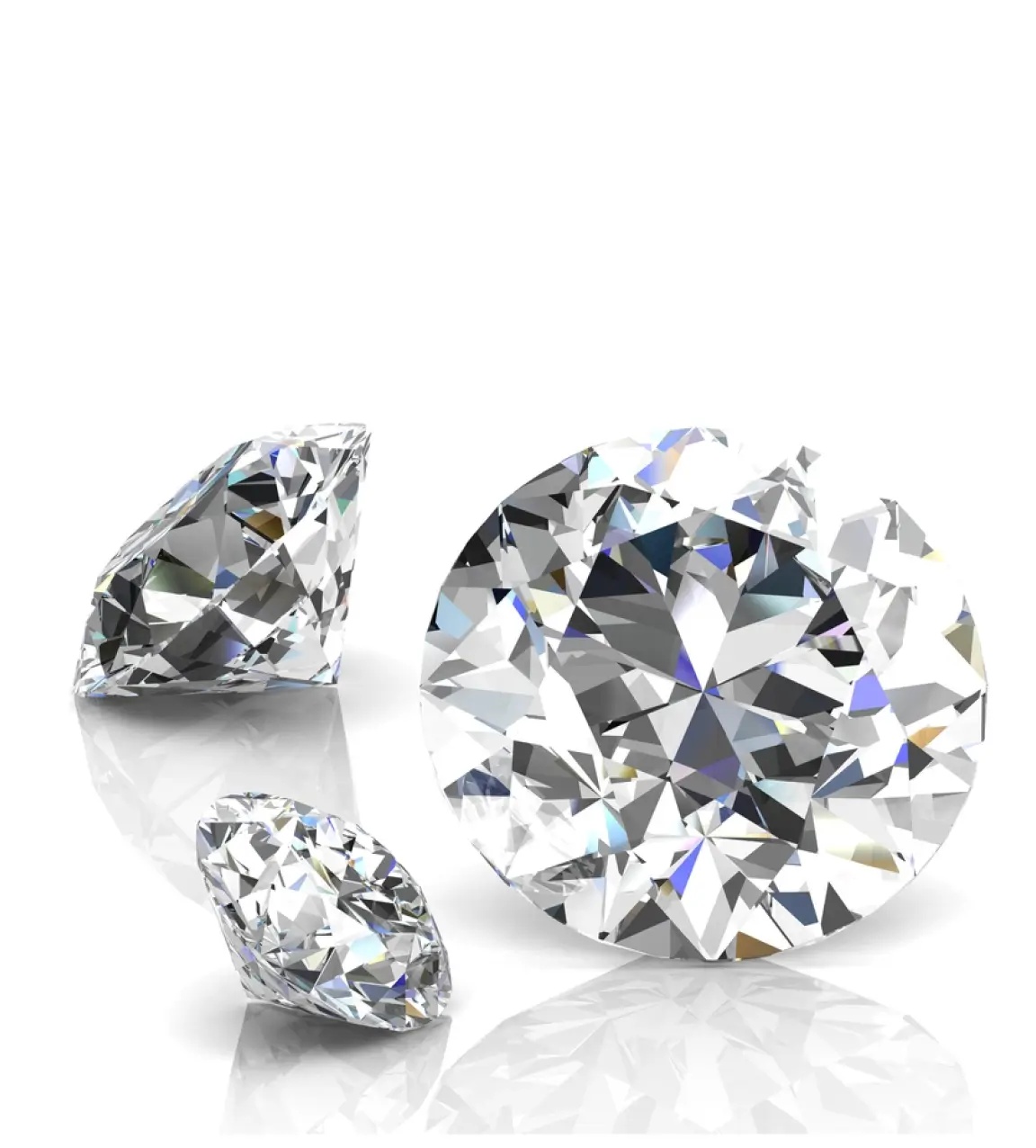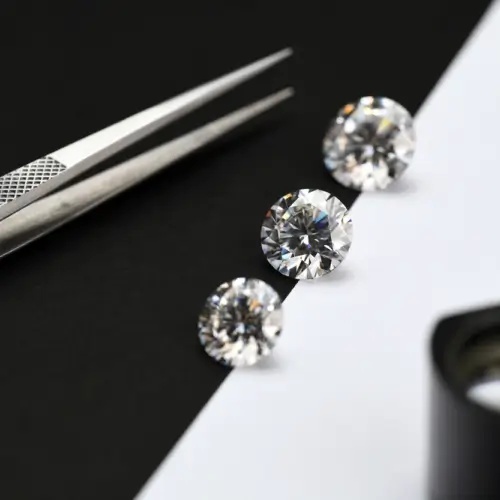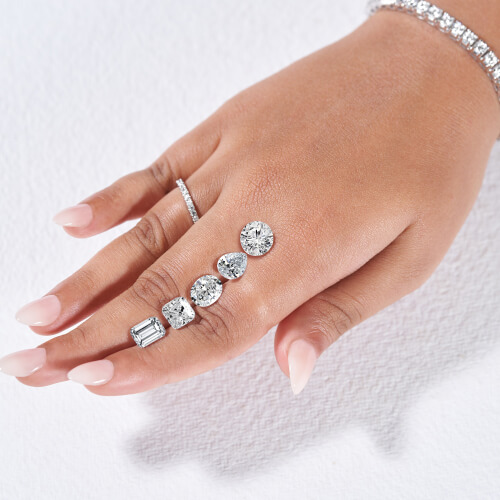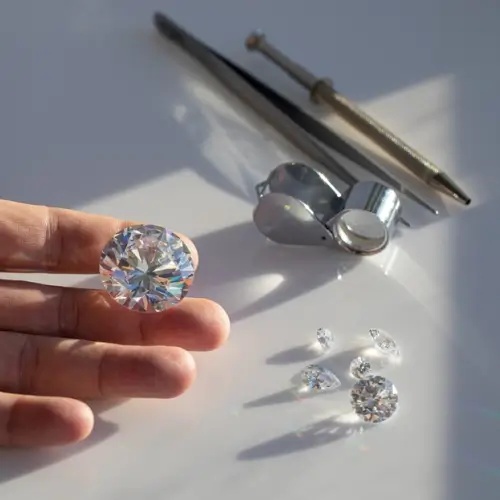There are several precious stones and metals in the world, but a diamond lasts forever and holds a sentimental value over time. We gift diamond rings, necklaces, and bracelets to our loved ones because not only are diamonds one of the most expensive elements in the world, but no other material can match their brilliance. However, over time, there have been changes in the world of jewels.
Since naturally occurring diamonds were highly expensive and only affordable for some, the invention of lab grown diamonds in 1954 revolutionized the realm of jewelry. Precious jewelry lovers gave the same level of respect to lab grown diamonds as they were not only unbelievably similar to naturally occurring diamonds but were also less environmentally detrimental. Then came cubic zirconia (popularly known as CZ), the synthetic stone, which even allowed those who could not afford diamonds to enjoy the privilege of owning a diamond-adjacent stone.
Let’s educate ourselves about the history of cubic zirconia and the major differences between it and lab grown diamonds.
Table of Content:
How Was Cubic Zirconia Created?
Since science made considerable progress and experimented to create various elements, CZ was first discovered by German mineralogists in 1937. However, the discovery was dismissed until the Soviet-era scientists rediscovered it. The aim of the discovery was to use cubic zirconia in place of diamonds, and many expected it to be as indestructible as diamonds. However, the use of CZ in jewelry did not begin until 1969.

What Are CZ and Lab Grown Diamonds?
The next question that we will answer is, ‘What are CZ and lab grown diamonds, and how are they made?’ Unlike naturally occurring diamonds, cubic zirconia is created in labs using zirconium oxide powder. It is a scientific process, but when explained in simple terms, the zirconium oxide powder is melted and mixed with various stabilizers. At 5000˚ Fahrenheit, the mixture is exposed to high temperatures. The process of crystallization takes place. The crystals then produce synthetic diamonds, which are shaped as per the jeweler’s or customer’s wish.

A lab grown diamond is created in a laboratory by imitating the natural process of a diamond’s growth, which organically takes 1.2 to 3 billion years. Although naturally occurring and lab grown diamonds share identical characteristics, lab diamonds are comparatively cheaper. There are two techniques that are used to create lab diamonds, known as HPHT (High Pressure, High Temperature) and CVD (Chemical Vapor Deposition). During HPHT, pure carbon is subjected to great heat and pressure via severe electric pulses and squeezed between metal pieces until the carbon melts and a diamond is formed. This process normally takes several days. To create CVD diamonds, a tiny portion of an existing diamond is treated with a heated, carbon-rich gas that reaches extreme temperatures. Carbon gas ionizes to form pure carbon molecules, which further attach to the initial diamond seed and create a fully formed diamond.
Can CZ Be Considered a Diamond?
Although CZ sparkles and looks identical to a diamond, it in no way shares the chemical properties of a diamond. While it is 8.5 on the Mohs scale of hardness, diamond is still the hardest material in the world (10 on the Mohs scale). Additionally, CZ can not be considered a diamond because it lacks the most important element that makes up a diamond - carbon. When a lab grown diamond is made, specialists mimic the process that takes place naturally to produce diamonds in the lab by using carbon. CZ, on the other hand, is made from zirconium oxide powder. Therefore, although we cannot consider CZ as a diamond, yet we can consider it a great diamond alternative.
Sharing identical properties with naturally occurring diamonds, lab grown diamonds are definitely considered “real” diamonds. A nonspecialist will not be able to distinguish a lab diamond and a natural diamond, meaning it is difficult to know which is which. Other than visual similarities, their uses are also the same in the realm of jewelry and other industries. They are sometimes considered a better alternative to naturally occurring diamonds because their production leads to a lesser carbon footprint.
Differences between Cubic Zirconia and Lab Grown Diamonds
Cubic zirconia and lab grown diamonds vastly differ from each other in aspects such as characteristics, color, price, and the process of making. We had already discussed the chemical properties and the process of their making. Now, we shall discuss the differences between their color, facets, and cut.
CZ is much softer when compared to lab grown diamonds, which is just as tough as any naturally produced diamond. While a lab grown diamond has sharp edges, cubic zirconia tends to have much-rounded edges and facets after being cut and polished. Hence, lab grown diamonds differ in the sense that their facets are much sharper.

SHOP LAB DIAMONDS
Lastly, the price difference is the most crucial and important difference between the two. Lab grown diamonds offer luxury and elegance. Jewels made out of them are of high quality and exude the same level of sophistication that naturally occurring diamonds do. Though their prices are on the higher side if they are of the supreme cut, clarity, color, and carat, they guarantee lifelong longevity and durability. CZ, in comparison to lab grown diamonds, is a synthetic crystal. For that reason, it cannot fetch the same price as lab grown diamond jewels do and will only last up to 3-5 years if worn regularly. One carat of zirconia stone will only cost $20 but will have no resale value and might even degrade in quality over time. On the other hand, a 1 carat, brilliant cut, round lab grown diamond can cost around $500-$1000, won’t depreciate in value, and will hold up to 50% of its resale value.
How to Distinguish Cubic Zirconia and Lab Grown Diamonds
The easiest and best way to differentiate CZ and lab created diamonds is to inspect them under natural light. A lab grown diamond will give off white light, while a cubic zirconia will give off rainbow light dispersions. Another way of spotting a difference between the two is by checking if any of them have scratches. Since lab grown diamonds are tough, it is rare for them to endure scratches, unlike CZ, which is known to be a softer alternative. As a result, it is easy to spot the difference between the two, even for those who have untrained eyes.

While CZ is an option that one can look into without losing a lot of their fortune, it lacks originality and an opulent feel. However, owing to the popularity of lab diamonds, many people opt to buy these man-made real diamonds because they become the perfect engagement rings and tennis bracelets. Since lab created diamonds score the same on the refractive index as natural diamonds, they make for the perfect and the most shimmery jewelry. We at Friendly Diamonds, always recommend our customers to buy jewels made from lab diamonds. They offer excellent designs with timeless elegance and are also sustainably made. Intricately designed rings and adorable stud earrings from us can also be passed down as family heirlooms. So, choose sustainability and sophistication that will give you a lifetime's worth of sparkle.
